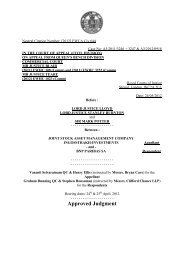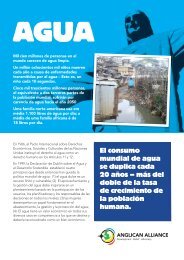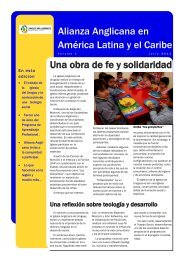attended by children of better-educated andwealthy families, making things even moredifficult for children attending ordinary schools inpoor areas.’ 3In 2009, Stanford University published the firstnational assessment of charter schools and foundthat ‘37 per cent deliver learning results that aresignificantly worse than their students would haverealised had they remained in traditional publicschools’, while nearly half were no different. 4In 2010, the University of California publishedthe report Choice Without Equity, which foundthat charter schools ‘continue to stratify studentsby race, class, and possibly language’, and thatthey ‘are more racially isolated than traditionalpublic schools in virtually every state and largemetropolitan area in the nation’. 5An alternative agendaOf course, markets in education have not onlybeen the obsession of the right. New Labourassiduously took up and ran with the agenda. Ifthe debate is now to move on, the progressiveleft must do more than provide the broadbrush-strokes of an ideological alternative. Itmust be clear and specific about the reformsand innovations required to make fairness ineducation a realisable goal. What would be thecentral planks of such an agenda? Here are sixsuggested dimensions:1. School admissions are a collective projectoverseen by empowered local admissionsforums, in which the rights and interestsof all children are prioritised above a rightto choice exercised by some parents andsubverted by increasing selection, througha locally determined combination of ballotsand banded intakes.2. School status is standardised, includingthe abolition of remaining grammarschools, halting the academies and freeschool programmes, and outlawing specialadmissions policies for faith schools.3. Funding is allocated to schools on an equitableand transparent per capita basis, using aformula that takes account of social need.4. Local education authorities have clear andproperly resourced functions where this is inthe interests of efficiency and local democracyand accountability – for instance, schooladmissions, new schools and mergers, specialeducational needs and curriculum support.5. Schools have the freedom to develop theirown identity and ethos, through easing thestifling demands of the national curriculumand recognising and trusting teachers’professionalism and expertise.6. Education is treated as much more than aprotracted process of university entrance,children as more than latent units ofeconomic production. We should seek tocreate a school experience in which the fullspectrum of children’s talents are released,the individuality of children’s interestsand preferences is properly valued, andpersonhood in its fullest sense is fostered.By comparing what exists and what we mustwork towards, we see that fairness requireschoices between values and goals that are notalways in harmony. Where there is conflictbetween, say, individual choice and the commongood, competition and collective responsibility,efficiency and democracy, one must be chosento lead, the other to follow. Politics is at its mostdismal when it pretends that no such choicesexist. It is at its most courageous when the ethicalcase is made for constructing our public spacesand institutions in ways that mean we are allbetter off by paying particular attention to thetrajectory of those who start from a position ofrelative disadvantage.In conclusion, fairness is about championingan educational ethic that goes beyond selfactualisationand that assumes and fostersconcern for the other. This is not only about amoral–philosophical observation that my selfrealisationand authenticity depend on yours, butalso engages the emerging evidence that whensome are allowed to fail and social divisionswiden, outcomes suffer for everyone. 6At the end of the day, fairness sings its ownname. If we are trying too hard to explain howand where it exists, it probably does not. For weknow it when we see it – when all our childrenprosper.3 Gary Anderson, ‘Flagship Toryfree schools scheme condemnedby Swedish education ministerBertil Ostberg’, Sunday Mirror,30 May 2010, www.mirror.co.uk/news/politics/2010/05/30/flagship-tory-free-schoolsdoomed-115875-22296075/.4 CREDO, Multiple Choice: CharterSchool Performance in 16 States,Centre for Research on EducationOutcomes, Stanford University,2009, p.1, http://credo.stanford.edu/reports/MULTIPLE_CHOICE_CREDO.pdf.5 Erica Frankenberg, GenevieveSiegel-Hawley and Jia Wang,Choice Without Equity: CharterSchool Segregation and the Needfor Civil Rights Standards, CivilRights Project, University ofCalifornia Los Angeles, 2010,p.4, http://civilrightsproject.ucla.edu/research/k-12-education/integration-and-diversity/choicewithout-equity-2009-report/frankenberg-choices-withoutequity-2010.pdf.6 See Richard Wilkinson andKate Pickett, The Spirit Level: WhyEquality is Better for Everyone,Penguin Books, updated 2010.Education for the good society | 21
1 Angela McRobbie, The Aftermathof Feminism: Gender, Culture andSocial Change, Sage, 2008; JaneKenway and Elizabeth Bullen,Consuming Children, OpenUniversity Press, 2001; andBecky Francis, ‘Gender, toysand learning’, Oxford Review ofEducation, 36(3), 2010, p.325.2 David Gillborn and DeborahYoudell, Rationing Education:Policy, Practice, Reform and Equity,Routledge, 2000.3 This marketised, competitivecontext has resulted in an acuteawareness (and often increasedanxiety) concerning pupils’ relativeeducational ‘achievement’, amongpolicy-makers, practitioners,parents and young peoplethemselves. See also Diane Reayand Helen Lucey, ‘The limits ofchoice: children and inner-cityschooling’, Sociology, 37, 2003,p.121, for an analysis of theeducation system’s production of‘success’ and ‘failure’.4. Education and genderBecky FrancisGender equality is a fundamental aspect ofthe Good Society. Yet as with other aspects ofsocial distinction wherein inequalities currentlyabound, such as social class and ‘race’, our currenteducation system exacerbates gender inequality,rather than reducing it.Second-wave feminism mounted a devastatingcritique of the education system, identifying themultiple ways in which it perpetuated genderdistinction and inequality. These included thecurriculum, which reflected masculinist agendasand preoccupations, and which appeared toconceive a male recipient; institutional andclassroom organisational and disciplinarypractices in which boys and girls were treatedas distinct groups; teacher perceptions andprejudices, including the classic construction ofboys as ‘naturally brilliant but lazy’ and girls asdiligent plodders; channelling of girls and boysdown different career routes; peer expectationsand pressure; and a culture of sexual andhomophobic harassment applied to teach girlstheir place and police ‘different’ expressions ofgender and sexuality.As we shall see, things have changed relativelylittle in schools in the intervening decades.Outside schooling, more women enter highereducation and engage paid work than in the1970s and 1980s, and middle-class womenhave certainly taken up diverse career routes(albeit gender distinctions remain concerningoccupational sector and remuneration).Nevertheless, women remain overwhelminglyresponsible for childcare and domesticwork. And patterns of gendered marketingand consumption have meant that genderdistinction is culturally more entrenched thanever. 1 However, crucially, public perception haschanged. There is a tendency to believe thatequality has been achieved. Indeed, if anything,it is perceived that boys are educationallydisadvantaged, having been ‘overtaken’ bygirls. The overwhelming preoccupation withattainment and the consequent moral panicaround boys’ ‘underachievement’ have ratherput feminist work in education on the backfoot. It is, therefore, worthwhile to spend sometime unpicking the context for this moral panic,before I go on to justify my claim that thestatus quo remains with the education systemcontinuing to perpetuate inequality.Gender and achievementAs discussed elsewhere in this collection, andin the Compass statement ‘Education for theGood Society’, neo-liberalism has positionedthe role of education as supplying humancapital in a competitive global market place. Tothis end, neoliberal faith in markets as driversof quality has underpinned the developmenteducational quasi markets; and the exclusivelyinstrumental view of education has beenmanifested in contemporary policy obsessionswith ‘standards’ as indicated by educationcredentials, and competition at all levels(between pupils, schools, areas and nations) inan increasingly segregated system. Perceptionsof policy success and the success of individualschools within the market rely on the drivingup of educational achievement, with a resultingfocus on underachieving pupils. ‘Teaching tothe test’ is rampant and a widely acknowledgedproblem, and forms of ‘educational triage’ 2 havebecome the norm, with resources focused onyoung people on ‘grade borderlines’. In thisenvironment, underachievement becomes aliability, while simultaneously (and ironically)unavoidable – in any competition there mustalways be losers as well as winners. 3One unanticipated outcome of the publicationof school league tables in England – the keymechanism supposedly informing parentconsumers in the education ‘market’ – was themoral panic about boys’ underachievement. Theleague tables published exam results for eachschool, and for the first time included a genderbreakdown. Media commentators were surprisedto see that boys were not outperforming girls tothe extent that had apparently been supposed(we surmise from the shocked response): girlswere catching up with boys in the traditionallymasculine subjects of maths and science, whereasboys had made no similar gains in the traditionallyfeminine fields of English and languages. Henceit appeared that girls were outperforming boys22 | www.compassonline.org.uk
- Page 1 and 2: Educationfor theGoodSocietyThe valu
- Page 3 and 4: Acknowledgements:Compass would like
- Page 5 and 6: ContributorsLisa Nandy is Labour MP
- Page 7 and 8: IntroductionEducation for the Good
- Page 9 and 10: 1 This article has been developedou
- Page 11 and 12: 8 See Ann Hodgson, Ken Spoursand Ma
- Page 13 and 14: 13 The most comprehensiverecent res
- Page 15 and 16: 1 See for example B. Simon, ‘Cane
- Page 17 and 18: 10 J. Martin, Making Socialists: Ma
- Page 19 and 20: the poorest homes (as measured by e
- Page 21: 1 In 2008, 15 per cent ofacademies
- Page 25 and 26: 8 Christine Skelton, Schooling theB
- Page 27 and 28: 1 See www.education.gov.uk/b0065507
- Page 29 and 30: 13 Barbara Fredrickson, ‘Therole
- Page 31 and 32: 6. Education forsustainabilityTeres
- Page 33 and 34: well as cognitively. Real understan
- Page 35 and 36: 7. Schools fordemocracyMichael Fiel
- Page 37 and 38: and joyful relations between person
- Page 39 and 40: 8 Wilfred Carr and AnthonyHartnett,
- Page 41 and 42: 1 Winston Churchill, quoted inNIACE
- Page 43 and 44: 9 See http://news.bbc.co.uk/1/hi/ed
- Page 45 and 46: 1 The Learning Age: A Renaissancefo
- Page 47 and 48: nities, and not have the public-pri
- Page 49 and 50: 4 Engineering flexibility: a system
- Page 51 and 52: other countries to require their re
- Page 53 and 54: 6. Remember that many of the outcom
- Page 55 and 56: 2 Adrian Elliott, State SchoolsSinc
- Page 57 and 58: 4 Peter Hyman, ‘Fear on the front
- Page 59 and 60: 12. Rethinking thecomprehensive ide
- Page 61 and 62: training, be part of a local system
- Page 64: About CompassCompass is the democra


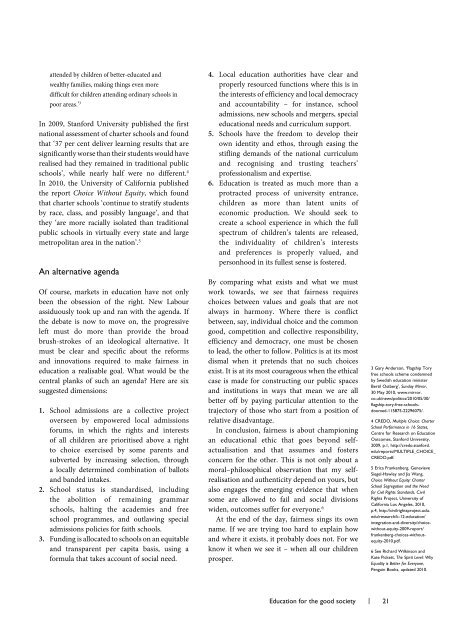
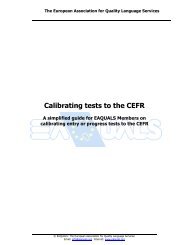
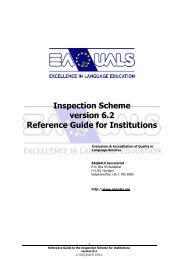
![[2012] UKUT 399 (TCC)](https://img.yumpu.com/51352289/1/184x260/2012-ukut-399-tcc.jpg?quality=85)

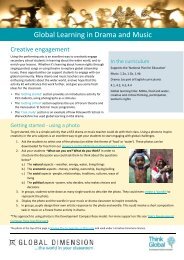
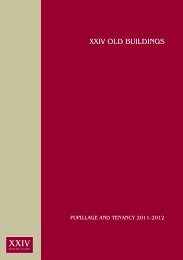
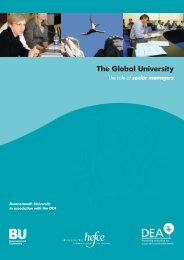
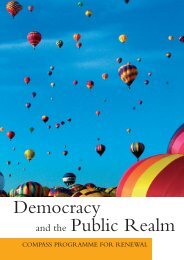
![Neutral Citation Number: [2009] EWHC 3198 (Ch) Case No: CH ...](https://img.yumpu.com/50120201/1/184x260/neutral-citation-number-2009-ewhc-3198-ch-case-no-ch-.jpg?quality=85)
